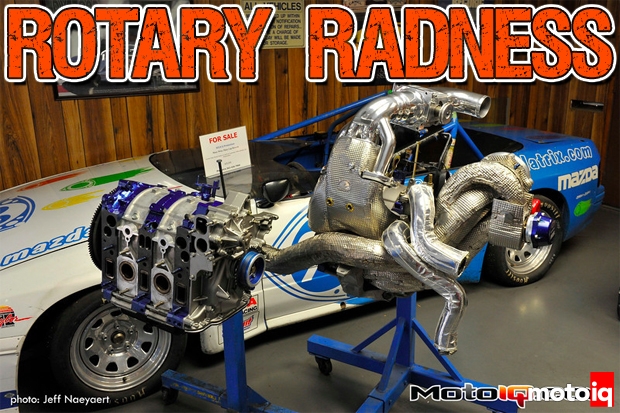,
 |
| One of the tricky parts when it comes to getting a Wankel engine running is getting the tons of seals around the rotor all good. These are the rotor seals and springs. It is best to get them laid out and ready. |
 |
| These are the rotor oil seals. These keep the oil in the eccentric shaft area from leaking into the combustion space. |
 |
| Kyle Mohan, rotary doctor and Formula D driving ace starts the engine assembly by getting all the seals in place on the engine's two rotors. Here he is installing the rotor oil seals and springs. |
 |
| Here Kyle has installed the rotor side seals and end seals and springs. The rotor side seals come oversized from the factory and must be hand sized to fit each rotor. The seals must be free to move up and down. The red stuff is assembly lube. Of course before assembly started Kyle spent several hours cleaning and inspecting all of the parts. The rotor grooves must be in perfect shape with no carbon and freely moving seals. |
 |
| This is the side housing of the 13B MSP. Both the intake ports (top) and the exhaust port (bottom) are in the side housing. Before the MSP, the exhaust port was in the rotor housing. Mazda relocated the exhaust port in the side housing to eliminate overlap to reduce hydrocarbon emissions in the dirty by nature rotary. For performance this is not that great as a bit of overlap helps power and the location of the side housing exhaust port precludes porting to increase duration and performance as the exhaust port is very close to the edge of the water o-ring sealing area moving the port closer can mean excessive heat and seal issues. The bridge in the intake port is to prevent the seal from catching on the large port and breaking. |
 |
| The intake and exhaust port in the center housing are not as big as the side housings. The odd shapes of the ports are not mistakes, they help precisely control intake and exhaust timing and are weirdly shaped because the rotor does not simply spin but moves in a tight figure 8 pattern driven by the eccentric shaft and stationary gears. |



